Social Surgery: A Gallery of Live-Tweeted Operations
Live Open-Heart Surgery
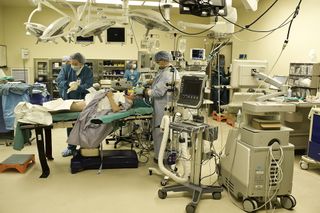
On Feb. 12, 2012, cardiothoracic surgeon Michael P. Macris performed the first live "Twittercast" of a beating-heart bypass at Memorial Hermann hospital in Houston. The patient, a 57-year-old man, was not identified for privacy reasons.
Beating Heart Bypass
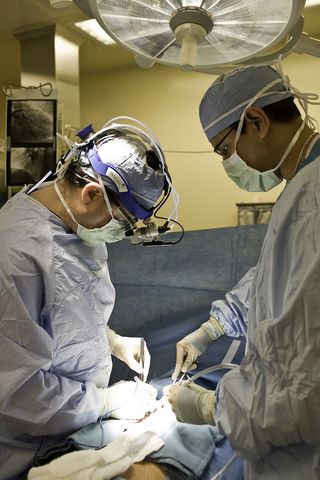
Surgeons remove the saphenous vein from the bypass patient's leg to use in his heart. (Warning: Some photos in this gallery will be graphic.)
Michael Macris
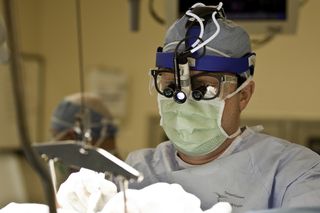
Michael Macris, a cardiothoracic surgeon, conducts a live-tweeted open-heart surgery.
Opening the Chest
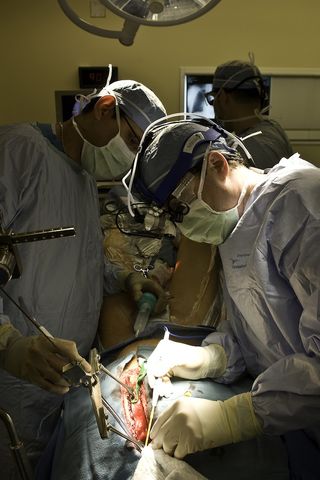
Surgeons use a mammary retractor to pull aside the chest wall in order to remove the mammary artery for use in the heart bypass.
Exposed Heart
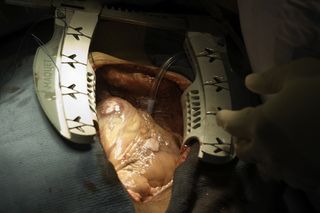
The exposed heart of a patient undergoing the first live-tweeted open heart surgery.
Brain Surgery
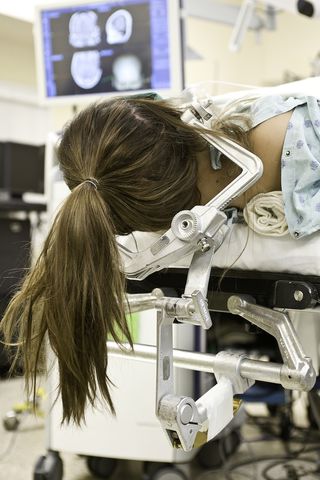
On May 9, 2012, Memorial Hermann hospital in Houston live-tweeted a brain surgery by Dr. Dong Kim.
Live Brain Surgery
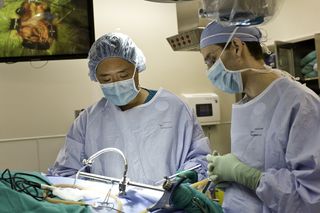
Memorial Hermann surgeon Dong Kim works to remove a cavernous angioma, a type of malformed blood vessel, from the brain of a 21-year-old woman.
Sign up for the Live Science daily newsletter now
Get the world’s most fascinating discoveries delivered straight to your inbox.
Open Brain
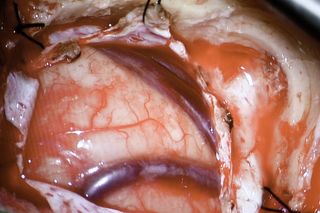
Twittercasts of surgery allow viewers to get very close to the action — as with this close-up of an open brain during the May 2012 live-tweeted surgery at Memorial Hermann in Houston.
Scoping Out the Brain
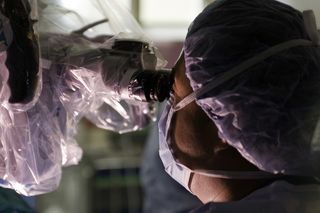
Neurosurgeon Dong Kim uses a scope during brain surgery.
Live C-Section
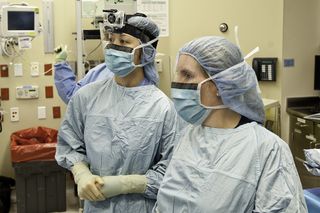
On Feb. 20, 2013, Memorial Hermann live-tweeted the process of a scheduled C-section from the patient's arrival at the hospital to the birth of her baby.
Prepping for Baby
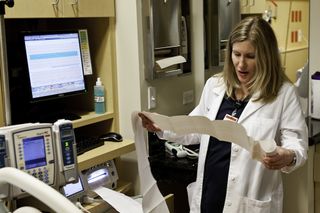
Obstetrician Anne Gonzalez visits her patient on the morning of the c-section. The mother was low-risk and this was her second cesarean, Gonzalez said.

Stephanie Pappas is a contributing writer for Live Science, covering topics ranging from geoscience to archaeology to the human brain and behavior. She was previously a senior writer for Live Science but is now a freelancer based in Denver, Colorado, and regularly contributes to Scientific American and The Monitor, the monthly magazine of the American Psychological Association. Stephanie received a bachelor's degree in psychology from the University of South Carolina and a graduate certificate in science communication from the University of California, Santa Cruz.
Most Popular




